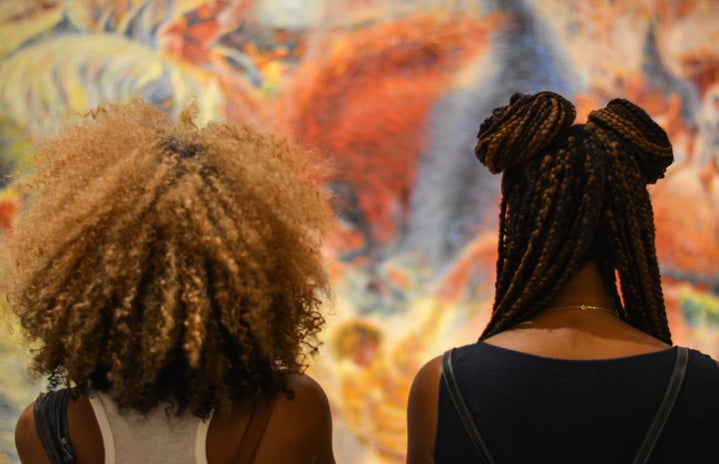Edited by Oishiki Ganguly
From all over the world, thousands flock to the Belvedere Museum in Vienna, Australia to see Gustav Klimt’s ‘The Kiss’ and experience the tenderness of the shimmering piece. Painted during his acclaimed ‘Golden Period’, Klimt was known to explore themes of love and often portrayed both romantic and platonic intimacy. Some spectators would find the goldwork alluring, others the manner of the embrace, some would even long to experience similar tranquility while some would lament over lost love. Klimt may not have intended for his work to be anything more than a depiction of serene love, but human nature begets that those who view the artwork, experience it through their conception of the piece.
Aesthetic emotions or emotions elicited by aesthetic stimuli directly contribute to the aesthetic object’s evaluation and appreciation. Often, the emotions we feel while experiencing aesthetic objects are a direct indicator of our liking. Generally, experiencing everyday positive emotions while viewing an aesthetic item would increase our appreciation for it. These emotions play a vital role in processing art and aesthetics and are necessary to gauge its viewers’ subjective pleasure; the aesthetic appeal of any object stems from the enjoyment felt while viewing it. This enjoyment is derived from pleasure felt, which in turn is a predictor of our appreciation.
On the other end of the spectrum, Kant’s ‘The Critique of Judgement’, which emphasized on the distinct feature of judgement in aesthetics, assumes we judge things as pleasurable because we find them beautiful and not the other way around, something modern aesthetic thought now finds limiting. While it is clear that an object’s beauty stems from our conception of it and the enjoyment we feel results from the pleasure experienced, do we know which comes first?
Kant also stressed upon aesthetic judgement requiring some ‘distance’ of thought; the emotions felt during aesthetic evaluation must not be for some end goal but should be sought for the sake of feeling the emotion itself. Simply put, art in any form must be consumed for oneself.
While art evokes emotion, these emotions are subjective and distinct. It could include everyday emotions such as happiness and sadness, or the physical response of laughter and tears. It could just as easily elicit longing, melancholy, and even nostalgia. But in each case, the aesthetic object moves us. When we find something ‘deeply moving’, it is because it is emotionally engaging; we’re creating an emotional connection with an aesthetic object through association and familiarity. Finding an old tea set belonging to your great-grandmother, reading a poem you read in 6th grade, watching a socially relevant film, listening to a song and remembering an old friend, you’ll find yourself socially connected to an aesthetic object because of the emotions it evokes and the value it holds thereafter. The social and personal context behind the aesthetic objects is more often than not the catalyst for finding art moving, but it is not restricted to this. Our conception of beauty, objects we find fascinating, and the thrill of novelty elicit these emotions too.
These aesthetic objects are ambiguous and open to interpretation, just as good art should be; yet, they are objects of fiction at the end of the day. The emotions we experience are not the consequence of a life event or an everyday occurrence; they have been created through works of art that have no bearing on real life. If that is the case, why are we so moved by things that do not exist? The paradox of fiction entails this. We feel strong surges of emotions for characters that do not exist, songs that aren’t based on our life experiences, and art that is abstract. Some suggest that we allow ourselves to experience these emotions because they aren’t real. Some believe these emotions cannot be evoked if we do not believe in the object of fiction. Others believe it allows for greater rationality in real life. We may never truly understand why we feel the way we feel about anything, much less art and aesthetics, but sometimes its enough to know that there’s enough beauty to feel intensely.



